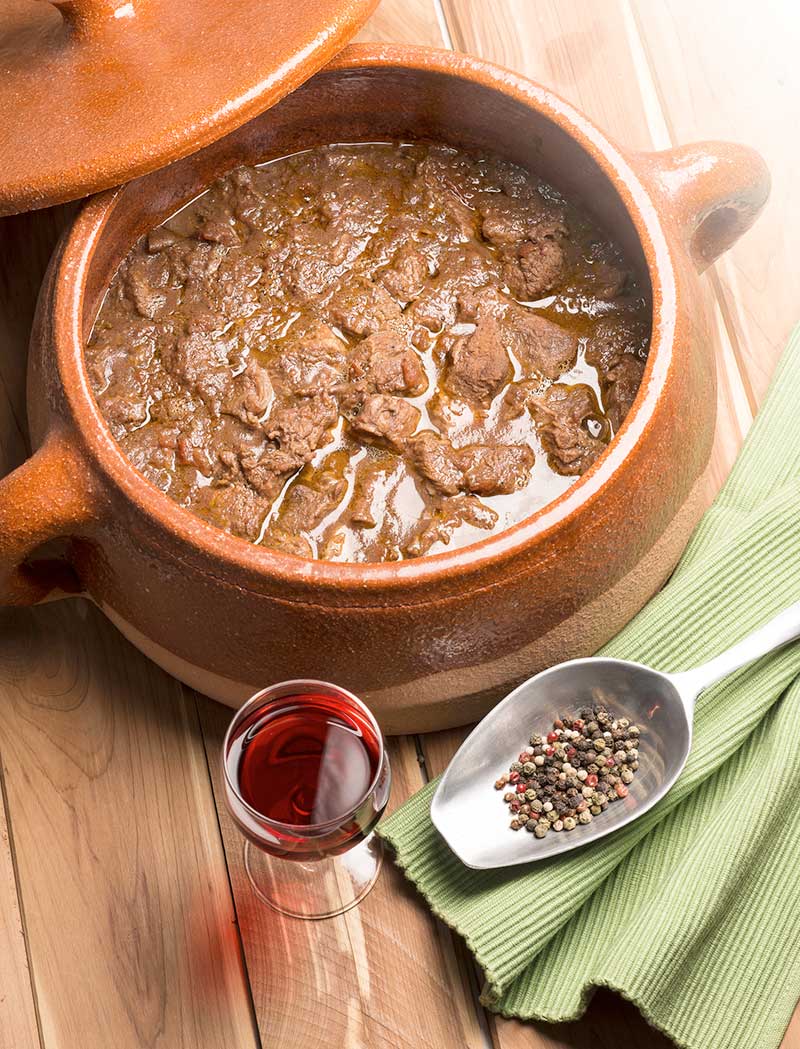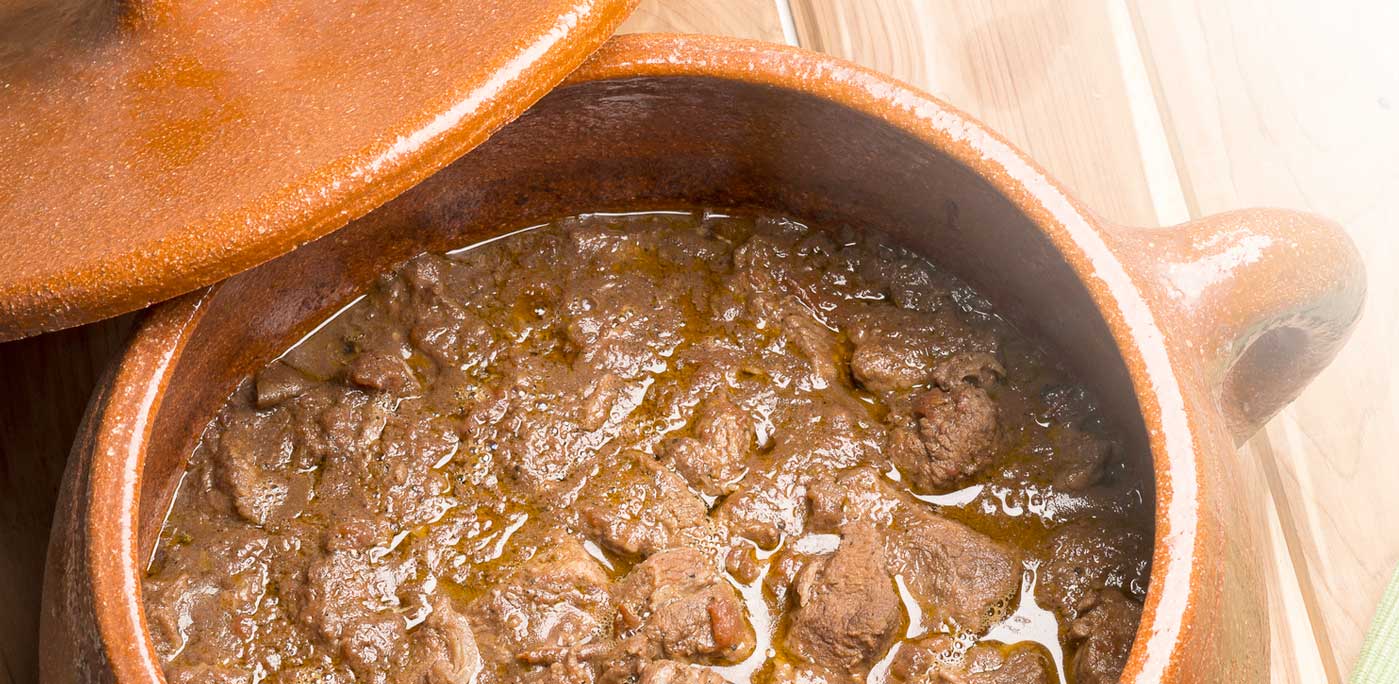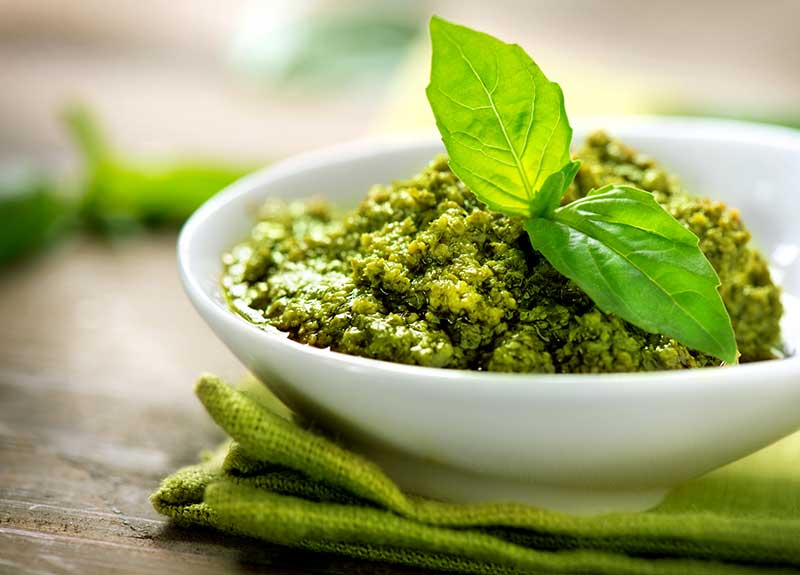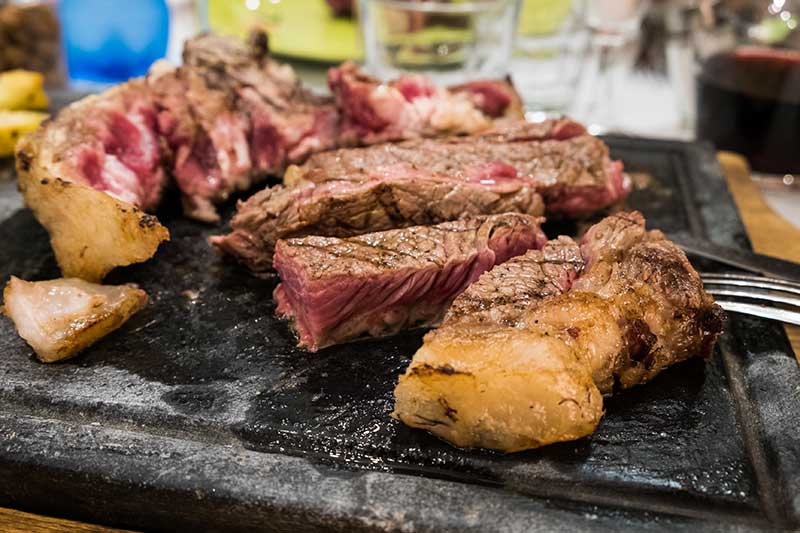Sturdy yet light, with its typical red color it made the cupola of Firenze’s duomo unique in the world: this is the terracotta dell’Impruneta, a small village only a stone throw away from Tuscany’s capital. Jars, vases, tiles, shingles, all baked for two days at 900 degree Celsius to become incredibly resistant to cold and heat thanks to the clay and marl they contain.

Since the Middle Ages, terracotta production represents an immense cultural and, indeed, culinary heritage of Italy. Legends tell that, at the furnace where the shingles used for Brunelleschi’ cupola were baked, there were also plenty of pots filled to the brim with peppered meats, marinated in local wine: nothing better to “feed those working hard on the cupola’s construction.”

The tradition is still alive today and, with it, also some diatribes: tomato? No, because in 1419, it hadn’t made its appearance on our tables, yet. Carrots and onion? Who knows. Pepper: 20 grams per each kilogram of meat. Could it be too much?

Whichever interpretation of the peposo recipe we go with, it always has to be cooked in a terracotta dell’Impruneta pot until the veal gets so tender it melts away in your mouth!































